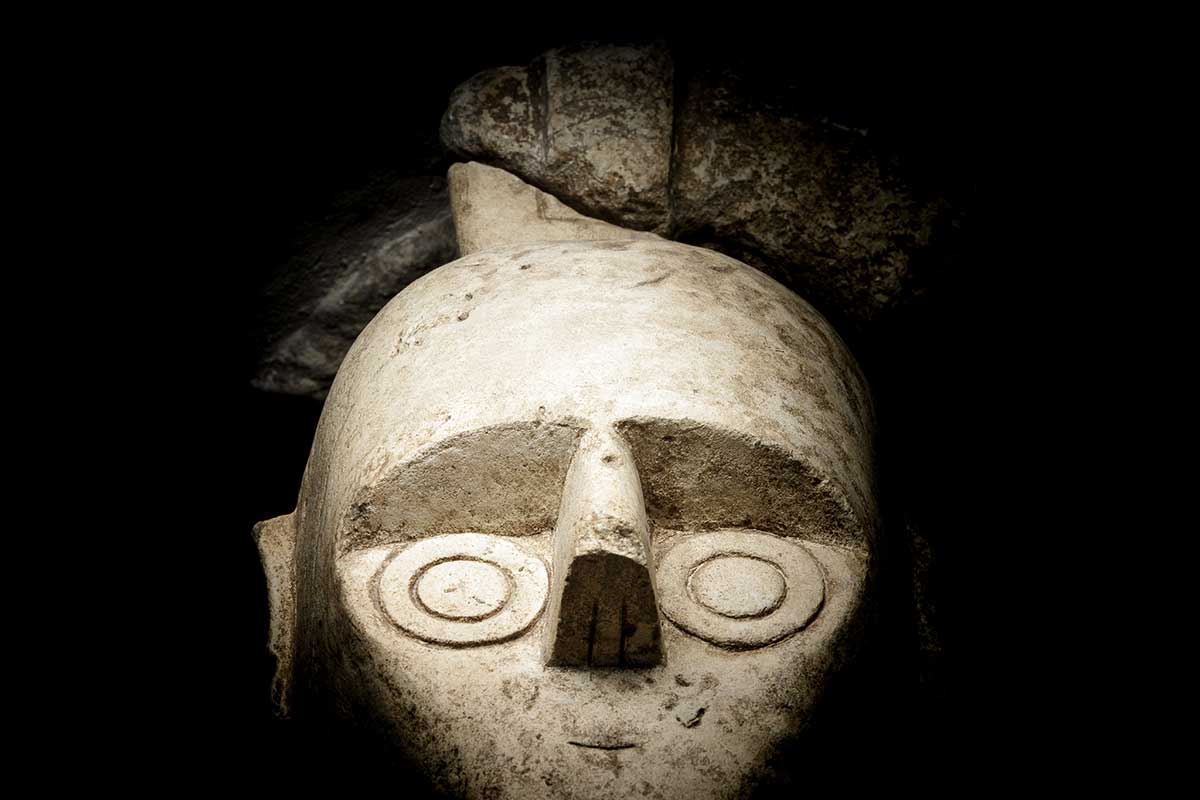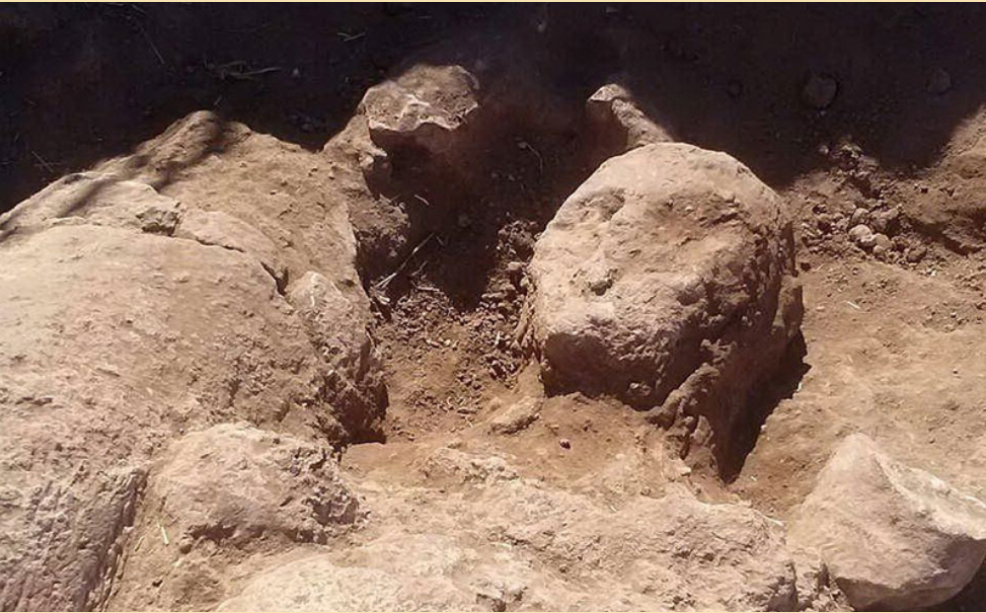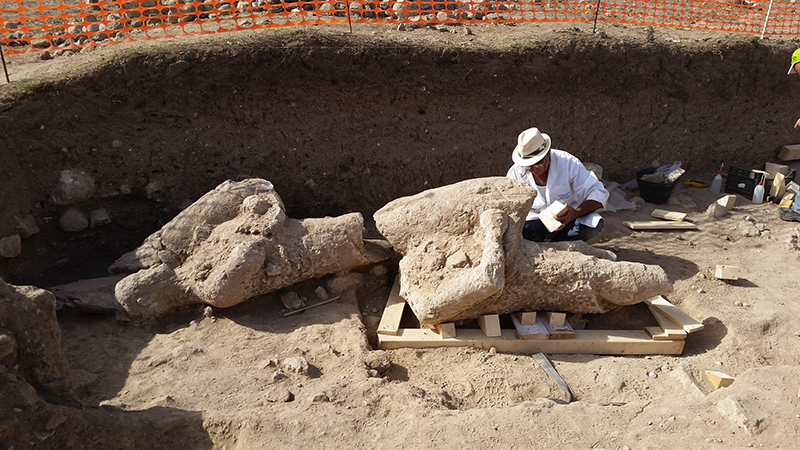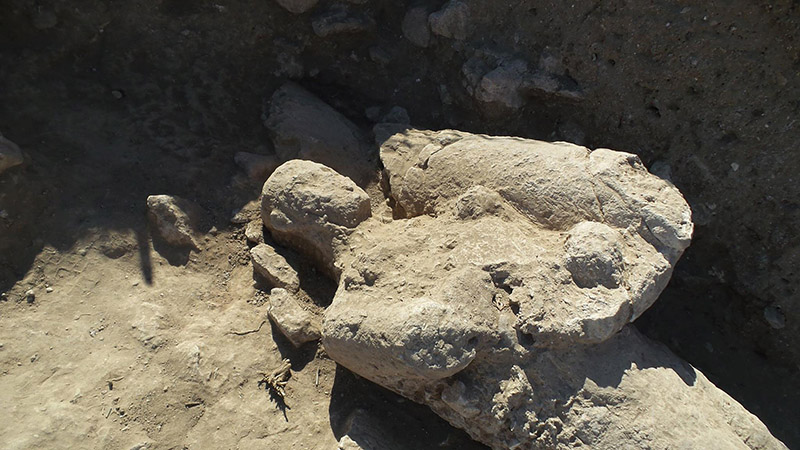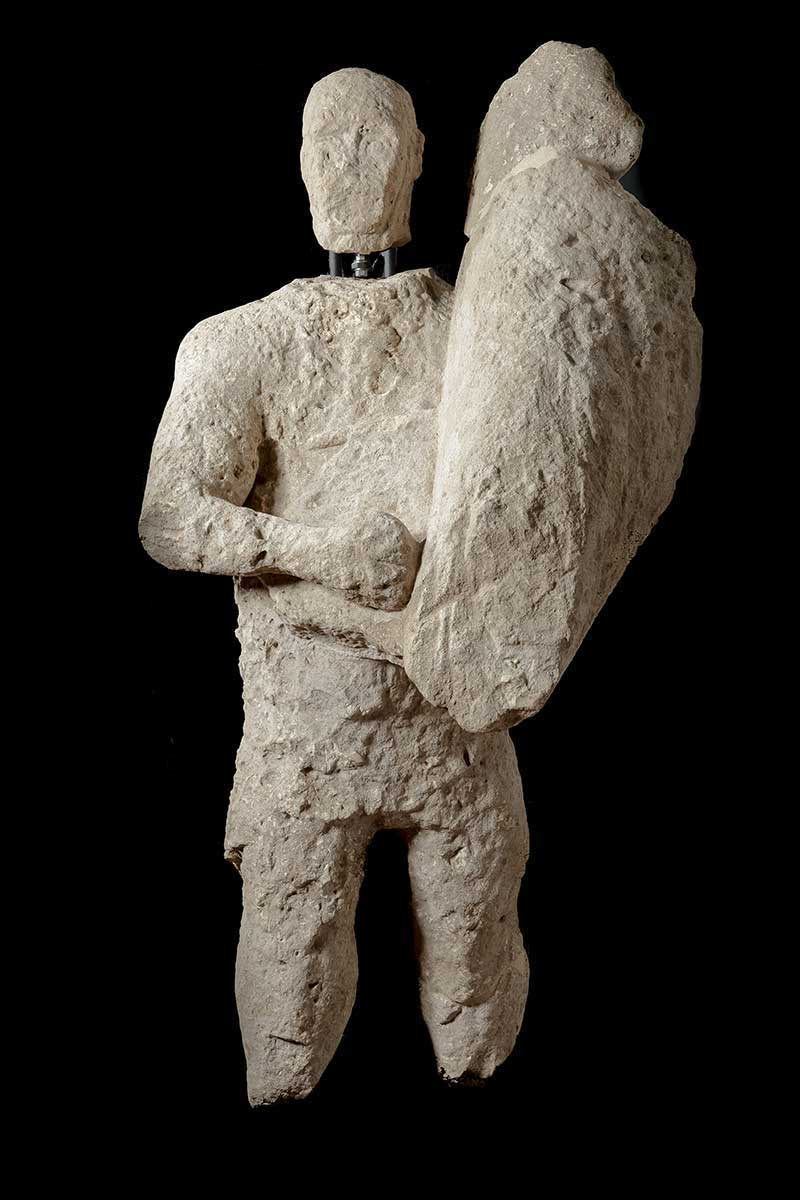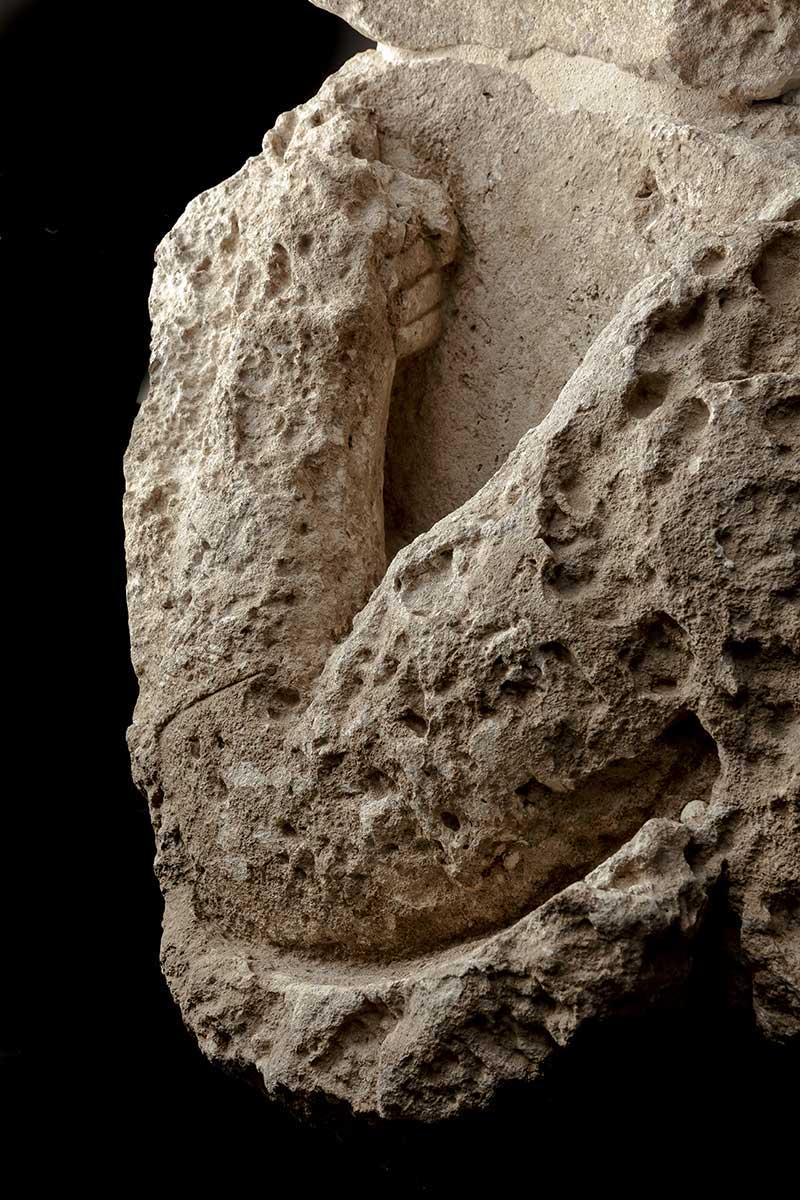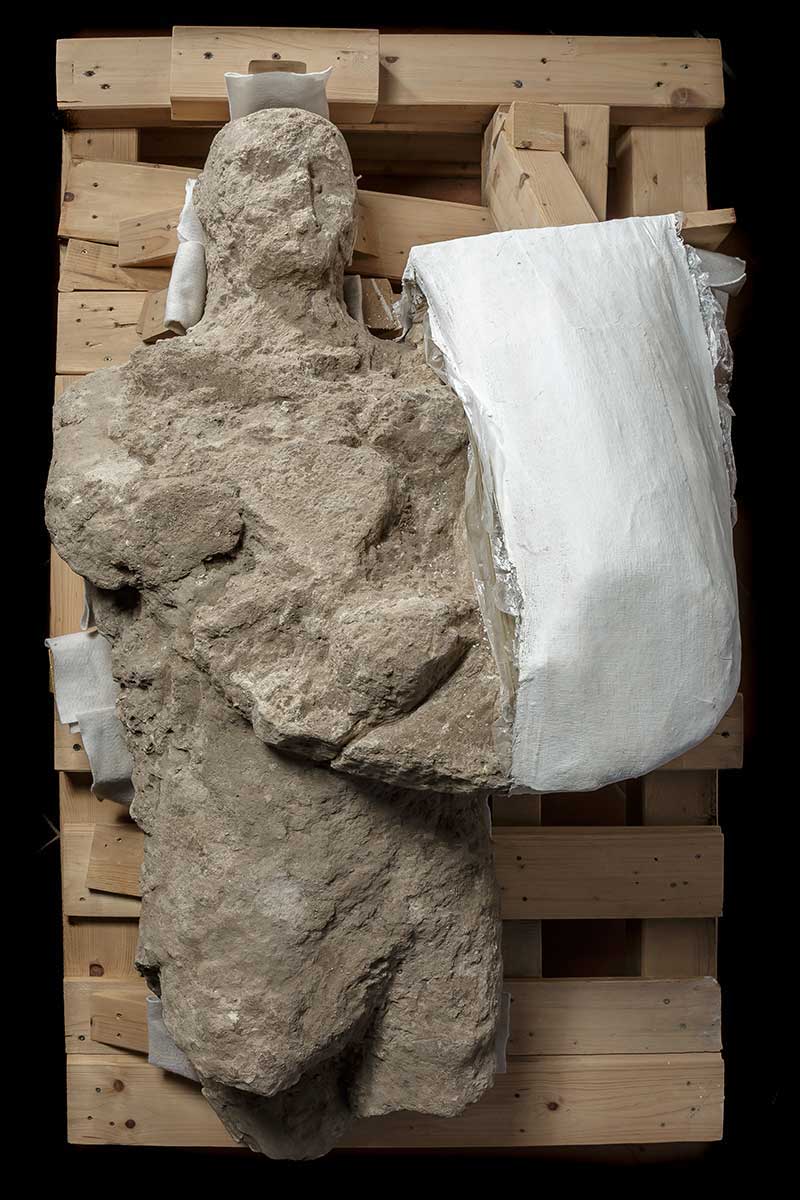The 2014 excavations
On 5 May 2014, the archaeological investigations at Mont’e Prama resumed after more than 30 years.
This intervention was possible thanks to the financing of Regional Law no. 7/2007 and to the agreement between the institutions involved, that is, the Regional Directorate for Cultural and Landscape Heritage of Sardinia, the Archaeological Superintendency of Cagliari and Oristano, the Municipality of Cabras, the Prison of Oristano-Massama, the University of Sassari, the University of Cagliari and Consortium Uno.
The first days were dedicated to weeding, cleaning the area and creating a grid of the area to be investigated, as is standard practice in archaeological excavations, in order to be able to unambiguously locate all the data deriving from a particular space.
Geophysical investigations with georadar were carried out over an area of approximately 80,000 m2. The subsoil was examined by Professor Gaetano Ranieri from 16 different angles to observe the anomalies of the terrain. On the basis of the main geophysical results and analyses of aerial and satellite photos, trial excavations were carried out in three squares in the easternmost portion of the area, without however finding any elements confirming the anomalies recorded by the instruments.
Therefore, the focus of the excavations once again turned to the necropolis, to the south of the portions already investigated by Bedini and Tronchetti in 1977 and 1979. Archaeological finds suggested that the succession of tombs and the dumping of sculpture fragments continued.
The continuation of the investigation brought to light numerous new elements of the sculptural complex, including betyls, models of nuraghi, fragments of statues of boxers, warriors and archers, aniconic stones, stone finds, fragments of pottery from the nuragic, phoenician and punic periods, and finally metal finds, among which was the “pendulum pendant” in the shape of a miniature flask, the so-called “pilgrim flask”, a typical artefact of the nuragic iron age.
The Cavalupo-type boxers
The most surprising find of the 2014 excavations was the recovery of two statues of boxers, adding a new iconography to the Mont’e Prama sculptures.
The first statue, partially reassembled and on display in the Civic museum of Cabras since 2016, depicts a standing male figure holding with his left hand a sort of large, rolled up and enveloping shield; the right arm is bent at a right angle, with the forearm and hand wrapped in a sort of long glove with spherical ends. The parts still remaining are the head with eyes in concentric circles, the bare chest, the pelvis covered by a short skirt, the arms, the shield wrapped in an almost conical shape and parts of the lower limbs.
The second statue is very similar, but has not yet been restored and is currently on display at the Civic museum of Cabras in the same condition in which it was found, demonstrating the complexity and delicacy of the restoration process of the sculptures of Mont’e Prama.

The two new statues have another peculiarity that distinguishes them from all the others found so far in the necropolis of Sinis: they have one leg forward and the bust is slightly twisted. For this reason, the base with the two feet side by side and wearing sandals, also on display at the Civic museum of Cabras, cannot belong to either of the two statues.
The two sculptures have strong similarities with the Sardinian bronze statuette of a “priest-warrior” found in the necropolis of Cavalupo di Vulci, in the Lazio Region, and dated to the second half of the 9th century BC.
The tombs
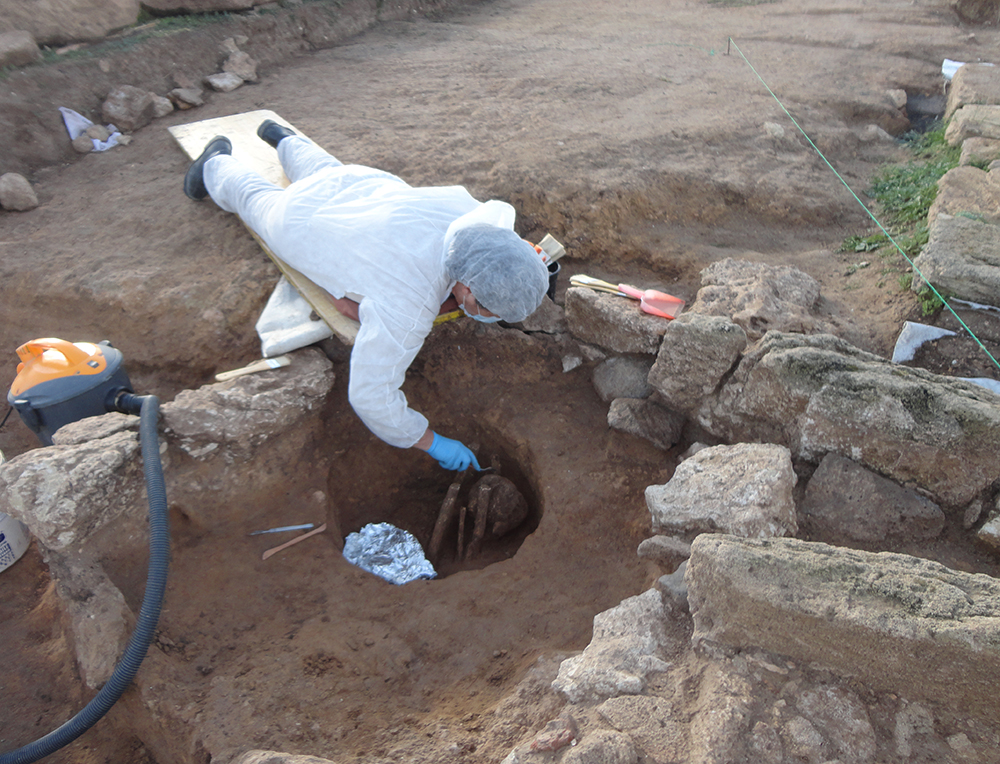
Sixteen tombs of the circular pit type were identified and excavated, eight of which were covered by a slab and eight of which with a simple pit, covered by a mound of stones. The tombs of the first type were covered by a monolithic slab that sealed the tomb, below which a very simple stratigraphy rich in land molluscs was identified, with few ceramic materials and no grave goods.
The bioarchaeological intervention was carried out concurrently and in synergy with the archaeologists on site and was designed and carried out with the aim of taking DNA samples for laboratory analysis. To minimise the risk of contamination with modern DNA, the archaeologists carried out the excavation in coveralls, masks, shoe covers, gloves and using sterile material.

During the excavation, the spatial location of the bones and fragments found was recorded. The type of soil, the chemical composition of which was the main cause of the poor condition of bone tissue, was analysed. The best-preserved parts were the teeth, the bones of the neurocranium, some vertebral arches and the long bones, while the facial bones, the phalanges and the short bones were more deteriorated. The absence of many anatomical parts has made it difficult to reconstruct the original position of the bodies. However, their position seems to have been the same in all the tombs analysed: the buried bodies usually had flexed legs, the upper arms parallel along the sides, with forearms crossed in front of the chest or parallel to the femurs, the head turned with the face downwards. In some cases, the individual was lying on its side in contact with the wall of the pit.
The body was placed on the bottom of the pit and covered with the earth from excavation of the pit. The bodies were probably lowered into the pits with the aid of shrouds and ropes to allow the crouched position to be maintained.
DNA analysis has confirmed findings from previous excavations as concerns the prevalence of young male individuals.



